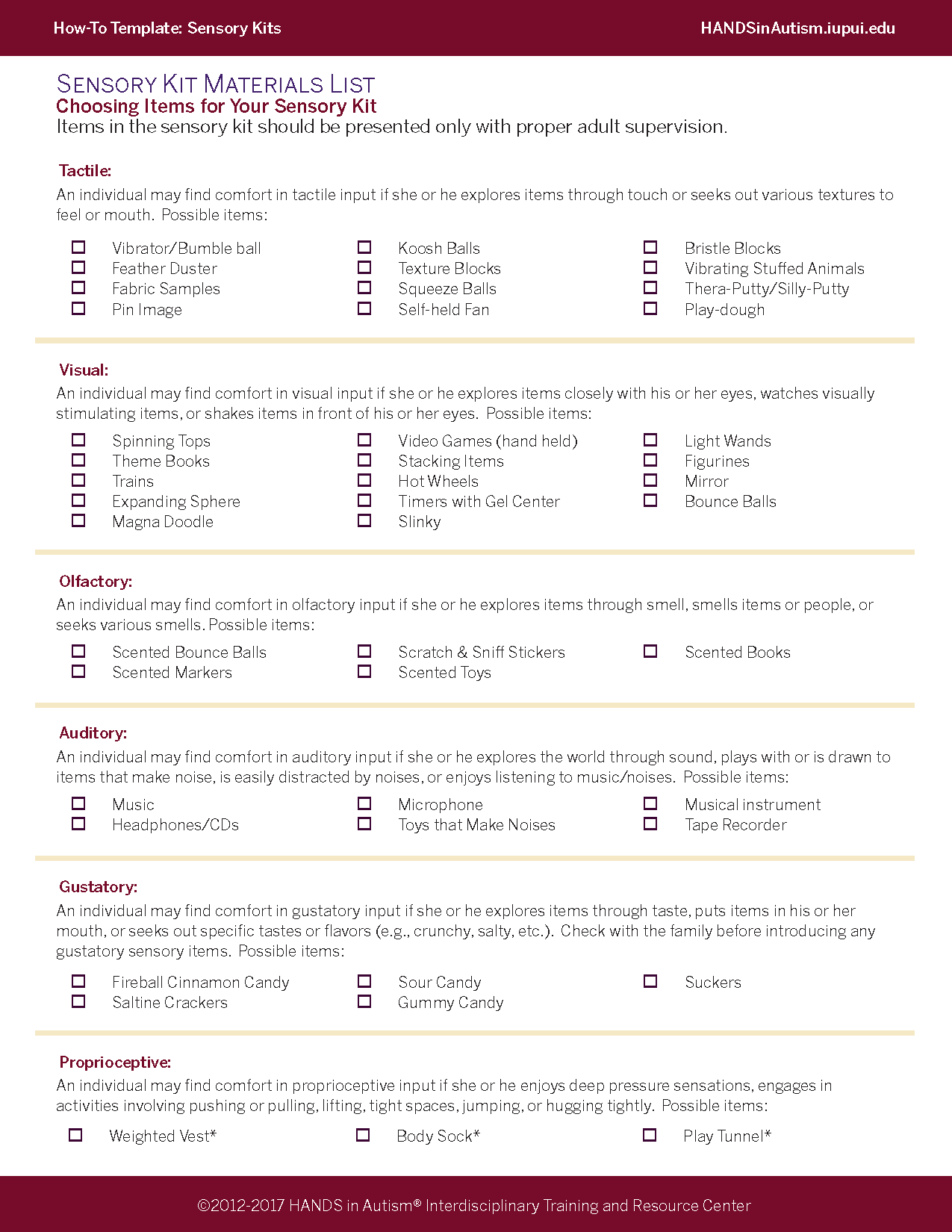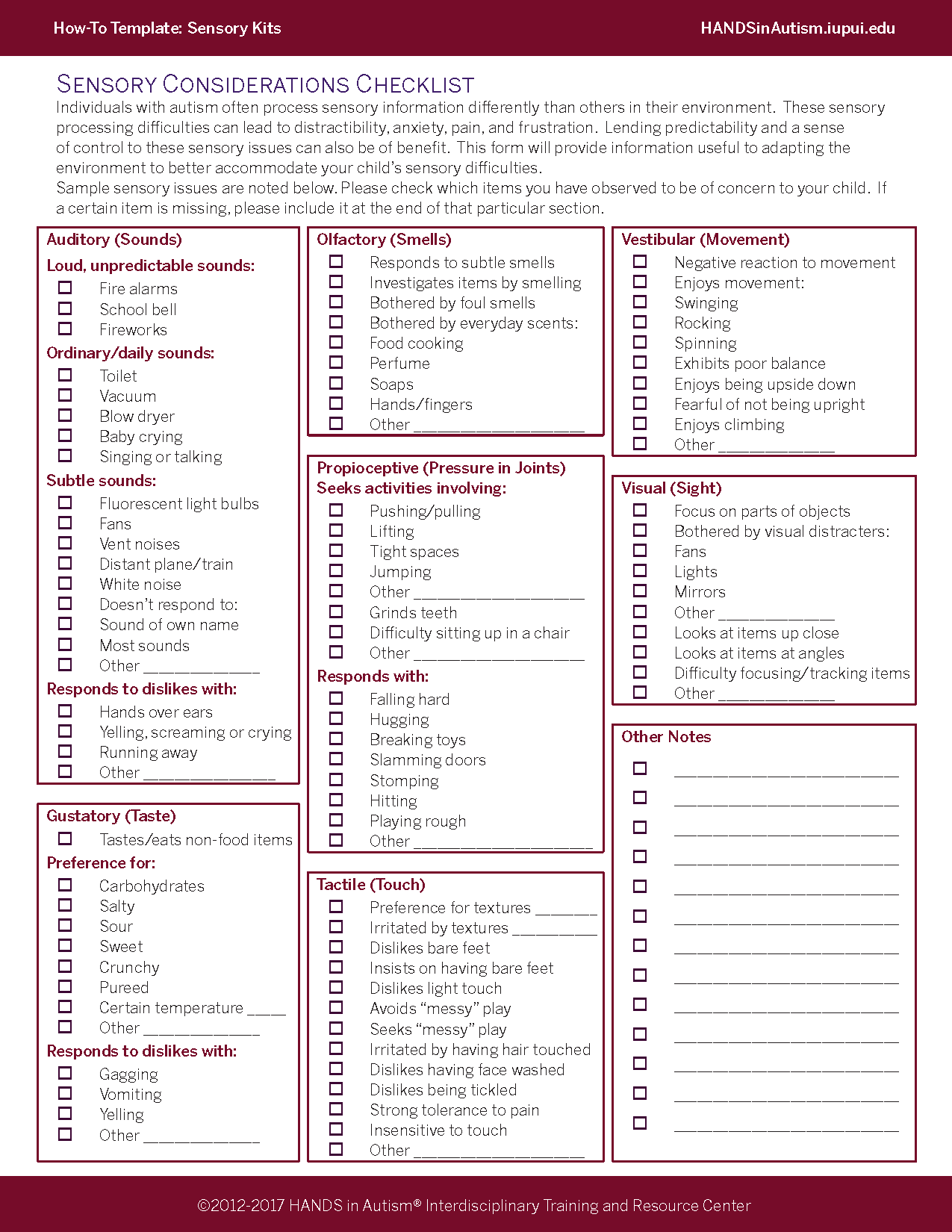Section 6: Practical Strategies across Settings
189 Sensory Kits
 Why use a Sensory Kit?
Why use a Sensory Kit?
- Individuals with ASD may process sensory information differently than other people and may have difficulty filtering out extraneous sounds, sights, and sensations.
- Sensory differences can involve under- or over-reactivity to even common sensory experiences (e.g., no reaction to a broken bone, intense reaction to the sound of a baby crying in the distance).
- Some sensory input may be extremely calming (e.g. mouthing on an item, rocking in a chair).
- Respecting sensory likes/dislikes can help support positive interactions in a variety of environments.
- It is often helpful to keep a container or location for access to several types of sensory materials (e.g., tactile fidgets, smelly stickers, music CDs, visual displays).

Making an Individualized Sensory Kit
- Complete the “Sensory Considerations” checklist or discuss sensory likes and dislikes with the caregiver.
- Determine which items would be appropriate and safe for the individual.
- The sensory kit should contain several options, targeting each of the senses, so as to appeal at that moment.
- Offer preferred items to the individual with proper monitoring and/or supervision.
- Calming sensory items should NOT be offered as consequences to behavior or this will teach that having behavior leads to access of preferred activities. Rather, these activities should be provided proactively, before the onset of behaviors.
- Allow access to the sensory kit during downtime or in preparation for use during difficult activities and/or events such as:
- On a car ride
- Waiting for a doctor
- Waiting for the bus
- While at the grocery store
- In a crowded, loud, and/or stimulating event
Choosing Items for Your Sensory Kit
Items in the sensory kit should be presented only with proper adult supervision.
This How-To_Sensory Kits handout by HANDS in Autism includes copies of these forms.
 Sensory Considerations
Sensory Considerations
Individuals with autism spectrum disorder (ASD) often process sensory information differently than others in their environment. These sensory processing difficulties can lead to distractibility, anxiety, pain, and frustration. Lending predictability and a sense of control to these sensory issues can also be of benefit. This form will provide information useful to adapting the environment to better accommodate an individual’s sensory difficulties. Sample sensory issues are noted below. Please check which items you have observed to be of concern. If a certain item is missing, please include it at the end of that particular section.
